[This is another episode of this blog’s occasional column, Fear and Loathing in McBuddhaland ]
Fiction is based on reality unless you’re a fairy-tale artist, you have to get your knowledge of life from somewhere. You have to know the material you’re writing about before you alter it. Hunter S. Thompson Associated Press interview (2003)
What is Hyperreality?
Questions regarding reality run deep. What can be trusted when surfaces are taken for truth and depth is abandoned for quick fixes to finding meaning in life?
In many ways we are all fairy-tale artists. There is a lot of fiction and a lot of fakeness that passes for reality at present. Hyperreality is about fakeness and the meaning of fakeness in social situations. It’s a manufactured reality that is invested with significance despite having little substance beyond the superficial.
In the past the concept of investing belief in illusions would have been seen as idiosyncratic or eccentric at best and rather psychotic in worst circumstances. At present, not investing belief in these illusions is seen in the same way. Hyperreality is about the collective psychotic delusion that much of modern culture has decreed to be “normal life”.
A culture that cannot distinguish between reality and illusion dies. –Chris Hedges from Empire of Illusion
Illusion is no longer possible, because the real is no longer possible. -Jean Baudrillard


Some definitions of hyperreality include:
- “fake for real”
- “The simulation of something which never really existed.” (Baudrillard)
- “The very definition of the real has become: that of which it is possible to give an equivalent reproduction. . . The real is not only what can be reproduced, but that which is always already reproduced: that is the hyperreal. . . which is entirely in simulation” (Baudrillard)
- “The authentic fake.” (Eco)
- The hyperreal is a system of simulation simulating itself. (Stanford Encyclopedia of Philosophy)
The philosopher Jean Baudrillard put forward the idea that today we only experience prepared realities– edited war footage, meaningless acts of terrorism, the Jerry Springer Show
Here are a few other things that fall under this “prepared reality” category:
| -Las Vegas
-Hollywood -Dubai
-ideological revolutions and movements including those of a religious nature that create ideological states (Russian revolution, China’s revolution and further the Cultural Revolution, Laos under the Khmer Rouge, Nazi Germany, North Korea, Iran, Afghanistan under the Taliban, Bhutan and “Gross National Happiness” ) These places and situations are and were real but many elements or facades proffered are not reality based. -cults and extreme religious movements
|
Snow World Hyderabad India
Snow world is the first snow theme park in India. It is the biggest snow park in the whole world. Snow Park sprawls over 17,000 sq feet area. By using art technology, in this snow park, artificial snow is produced and allowed to fall which almost offers a real look. In the snow world, there is a “Cryo Zone” which includes igloos, alpine forest, some figures of polar bears, penguins and some other attractions made with the help of artificially produced snow. The snow is made of safe elements as mineral water quality water and there will be no harmful effects of this snow. At the time of entry, to all the customers waterproof shoes, gloves and some warm clothes is provided by the park members so as to protect from the cold climate inside due to continues falling of snow. To all the visitors, a sweltering hot soup is also served. (source)
|
| -pornography (sex more “real” than sex for many–was going to mention Tom of Finland, Internet affairs, Second Life, BDSM, etc. but that’s a whole post unto itself)
-political staging, “spin” and satire (click the image of John Ashcroft and look carefully) -the Stephen Colbert show (intentionally ironic yet some believe it has “authority” or further that it is “real”) -soap operas and TV drama series (eg. Sopranos, CSI, Dexter) |
-flash mobs
-mall culture -casinos -gated communities -manicured gardens -museums and art galleries (manufacturing a reality of “rarity” and “value”) -reality shows such as Big Brother, Survivor (a constructed environment) -world fairs and expositions -virtual reality -historical recreations -recreations of “nature” -aquariums and zoos (there are no “natural habitats” in these places)
|
The list is incredibly long and diverse and covers situations all over the globe.
In America there are university courses on the significance of Britney Spears and her performances and dozens of philosophy books attempting to wring some meaning out of the Matrix movies. There are magazines dedicated to dissecting soap operas as if they were real, blogs about comic books, replica merchandise for cartoon characters, movies about making movies about fictional characters, videos about concerts about news events about realities none of the audiences can possibly fathom, advertising for valueless goods representing imaginary social capital that changes as fast as a blink. And it’s all experientially taken as true for a moment, yet it’s all unreal.
It’s a Barbie World
Most notable is these types of things are not meant to be simple representations of reality or expressions of an individual personal nature. They are communal and they are replications which are presented as reality itself.
To disbelieve in these lands of Nod relegates individuals to the margins with labels like eccentric, different, radical, loser (for not pursuing “success” or following the trend), anti-social, fringe element, borderline, drop-out, counter-culture, unbalanced, anarchist (regardless of political belief), evil or even delusional or insane. When a whole culture is going insane where does that leave those who take notice of it? In North Korea or Burma it leaves one in prison or dead and in North America it leads one to the psychiatrist’s office for a prescription for “happy” pills [or into “home leaving”].
There is significant social pressure to put on a happy face (for a counter proposal see Brightsided), to go with the flow, not to make waves, and even to “live the dream”. It’s called the American Dream for a reason.
Do we lose touch with reality when we copy it? Or when we create a simulated or virtual reality? Does the copy or the similacra (imaginary reality) become more authoritative than the original?
The recent Avatar movie is demonstrating that this is quite possible. There has been a wave of depression among viewers who have watched the movie as CNN has reported. A psychiatrist, Dr. Stephan Quentzel, has stated in the CNN piece:
“It has taken the best of our technology to create this virtual world and real life will never be as utopian as it seems onscreen. It makes real life seem more imperfect.”
This possibility has long been discussed in the literature by post-modern theorists. Rachel Merkhoffer in her article Hyperreality:The Authentic Fake has stated:
One danger of hyperreality is that people may look to hyperreal images as role models, when the images don’t even represent real people.
The artificial has asserted itself over reality in a palpable way in the Avatar instance.
One of the recent writers on this phenomenon has been Neil Postman. In his book “Amusing Ourselves to Death:Public Discourse in the Age of Show Business” he states:
There is no more disturbing consequence of the electronic and graphic revolution than this: that the world as given to us through television seems natural, not bizarre. For the loss of the sense of the strange is a sign of adjustment, and the extent to which we have adjusted is a measure of the extent to which we have changed. Our culture’s adjustment to the epistemology of television is by now almost complete; we have so thoroughly accepted its definitions of truth, knowledge and reality that irrelevance seems to us to be filled with import, and incoherence seems eminently sane. [emphasis mine]
One can throw the television out the window but that doesn’t stop the hyperreal surroundings with which the developed (and increasingly the developing) world must contend.
There are levels of this simulation which can be demarcated as well.
… 4 orders of simulation. Here are some examples:
1. signs thought of as reflecting reality: re-presenting “objective” truth;
2. signs mask reality: reinforces notion of reality;
3. signs mask the absence of reality;
-Disneyworld
-Watergate
-LA life: jogging, psychotherapy, organic food
4. signs become simulacra – they have no relation to reality; they simulate a simulation
-Spinal Tap
-Cheers bars
-new urbanism
-Starbucks
-the Gulf War was a video game
Another author Peter Stromberg has proposed the term Romantic Realism to describe this phenomenon. He defines it in the advertising and entertainment realm as referring to:
… the tremendous variety of images of perfection that saturate our cultural environment. Television programs, airbrushed photographs, theme parks, romance novels, the list of examples is virtually endless. All of these depict some part of mundane life—they are realistic—and all of them are also more meaningful and appealing than mundane life–they are romantic.
Later in his article on Romantic Realism he poses several questions as to the effects of this altered reality on society and personal psychology. Some of those questions pertinent to the current discussion are:
• What techniques are being used to create an image that is at once close to our world yet better than everyday experience?
• If romantic realism is like religion in that it offers a vision of paradise, how is it unlike religion? Compare these two ways of conceiving utopia, what are their relative advantages and disadvantages?
• Do you agree that romantic realism tends to create a mood of pervasive dissatisfaction? Should this be considered a serious social problem? What are its effects?
The manufacture of desire is what consumer culture is all about. And that desire is not for things in themselves but what those things come to collectively represent. It is a distortion of need and satisfaction. The “paradise” that is promised is one that is vacuous and devoid of meaning. It is a playground of anti-reality. The authentic and real are devalued and unrecognized, while the shallow and unreal are hyped and twisted to become so desirous and/or alienating that people die because of it. [Micheal Jackson, Brittany Murphy, Anna Nicole Smith, Marilyn Monroe, Janis Joplin, Sid Vicious, River Phoenix, Jim Morrison, Andy Gibb, Judy Garland, Curt Cobain, Jean-Michel Basquiat, John Belushi, Keith Moon, Michael Hutchence, Elvis Presley, David Foster Wallace, Gia Marie Carangi, Gianni Versace, John Lennon, Phil Hartman, Sharon Tate, Notorious B.I.G, Tupac Shakur, JonBenet Ramsey–Would these people have died in the manner they did if image, fame and the distorted thinking that comes from the manufactured were not part of their lives? No one can say. But a certain lack of reality contact was present in all these cases, and many other similar situations.]
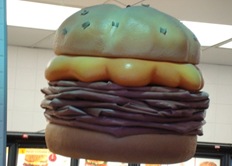
How Does This Hyperreal Belief Structure Occur?
There is much talk about authenticity in the media, in popular culture, by relationship experts, in the art and antiquities market, by dharma teachers and among friends.
Sometimes in looking deeply at these situations it is surprising how rarely the authentic is present.
Over time people build up an image of reality with whatever information is available along with a good helping of personal interpretation as to what that information means to them as mortar. The result is a simulacrum. Here is a philosophical description of that from the Wikipedia
Where Plato saw two steps of reproduction — faithful, and intentionally distorted (simulacrum) — Baudrillard sees four: (1) basic reflection of reality, (2) perversion of reality; (3) pretence of reality (where there is no model); and (4) simulacrum, which “bears no relation to any reality whatsoever”.
There has been a long run up to this situation of developing an artificial cultural as belief system. As material circumstances built up so did the apparent level of simulation of reality. The complexity of material life is companion to the complexity of the superficial. Andrew Reed in Simulacra & Hyperreality outlines Jean Baudrillard’s theory of its historical development.
1.First order, associated with the pre-modern period, where the image is clearly an artificial placemarker for the real item.
2.Second order, associated with the industrial Revolution, where distinctions between image and reality breaks down due to the proliferation of mass-produced copies. The items’ ability to imitate reality threatens to replace the original version.
3.Third order, associated with the postmodern age, where the simulacrum precedes the original and the distinction between reality and representation break down. There is only the simulacrum
What brings hyperreality to overshadow and replace reality? Andrew Reed in the same article deals with the influence of this social phenomenon on architecture and has distilled some of the influences down to the following:
Baudrillard theorizes the lack of distinctions between reality and simulacra originates in several phenomena:
1.Contemporary media including television, film, print and the Internet, which are responsible for blurring the line between goods that are needed and goods for which a need is created by commercial images.
2.Exchange value, in which the value of goods is based on money rather than usefulness.
3.Multinational capitalism, which separates produced goods from the plants, minerals and other original materials and the process used to create them.
4.Urbanization, which separates humans from the natural world.
5.Language and ideology, in which language is used to obscure rather than reveal reality when used by dominant, politically powerful groups.
Each one of these is a long essay unto itself. I will take only one example and apply this in a general way to it. That would be the example of social identity including on-line representations of self.
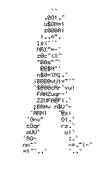 Identity is as much a manufactured product as any other. How we choose to relate to one another is often a function of our social worth in the human market place (jobs, partners, groups, opportunities). Values are as much of a commodity as other cultural and social expressions.
Identity is as much a manufactured product as any other. How we choose to relate to one another is often a function of our social worth in the human market place (jobs, partners, groups, opportunities). Values are as much of a commodity as other cultural and social expressions.
We have already learned to commodify ourselves in order to gain. Advertising and the language of the power elites have the tools available to those who, by virtue of various types of privilege, may wish to wield them. There are many levels of self-commodification. From projecting a specific image to obtain political office to literally renting one’s body out for the sexual gratification of others, transactions based on projection of not-quite real or outrightly hyperreal identity constructions occur frequently.
Although this kind of reality representation and misrepresentation is sometimes exaggerated on the Internet it is also very much present in real life as well. The fake in face to face is just a little harder to discern.
We are many selves-who we think we are, who others think we are, who we are online, who we wish we were. It may be that on-line we feel a greater freedom to represent or misrepresent ourselves, to play out our own psychic distortions of who we think we are or ought to be, versus who we may actually be.
It is very easy to create an avatar that functions in that manner in cyberspace. But it is becoming increasingly easy to adjust both the physical and psychic self in the real world as well. In the latter case the use of pharmaceuticals and recreational drugs can remake an entire personality, but generally only while the synthetic substances are present in the bloodstream.
In a recent issue (Nov/Dec 09) of Adbusters magazine an article speculates about avatars and the future of identity and consciousness. The author states:
Already you can see signs of an advent of avatarism. Humans are happy to go through synthetic self-transformations…breast augmentation, Botox, plastic surgery, tummy tucks, etc. At the same time many others neglect their physical selves, adopting (sometimes false) computer identities. Altogether people are less and less resistant to the synthetic…
With the malleability of the synthetic, identity construction becomes increasingly fluid. Depending upon how this is handled or if indeed it is handled at all by the individual rather than simply indulged, it could be a useful method for discerning the actual nature of ego identity. Or conversely it could just become another form of these fish eye lens distortions and the ongoing transformation of the spectacle of the self .
[I do so want to get into Guy DeBord’s philosophy of the Society of the Spectacle here but it’s just too much. That’ll come up in a future post. Perhaps called Hyperreality 2.0]
If I were a Buddhist Post-modern Philosopher…
Like an actor constructing a character, in my mind a simulation of Buddhist Post-modern Philosopher becomes assembled, animated and commences to construct philosophical thoughts as if sentient in it’s own right. A mental pretense of reality and authority. An idea made into a symbolic object. Thoughts as objects emanating from a simulation of a being as object constructed by a psycho-physical being acting as blog author object. The layers of unreality are numerous indeed. And all based on both material and social objects. But if I were a Buddhist Post-modern Philosopher I would say this…
In his later works Baudrillard extols the virtues of symbolic exchange over commodity exchange in the capitalist/Marxist sense. This harkening to “golden ages” and the value of symbolic goods over material goods was something for which he was criticized. There is no backward historical possibility. That is romanticism. Maybe even forget about striving for such things. There can only be breaking through both symbolism and materialism as another manifestation of reality. Reworking this in a Buddhist sense, the “evolution” is towards a designification of any material or ideological exchange as a medium of social cohesion. It is towards understanding and the only exchange is the realization of realization. That would make for a particular Buddhist utopianism, the freedom of all sentient beings. But that too is another idealization fraught with symbolism. What is beyond that? That’s as far as I can think.
Conclusion
One of my favorite magazines is Adbusters. They play with the hyperreal, the images and representations and challenge the agenda of corporate anesthetization in an insightful and thought provoking way. It’s satire sometimes but with a serious edge.
It is useful for understanding the interplay of politics, desire, marketing and psychology.
I mention that only because a recent issue is dually titled The Natural World/The Virtual World and it touches upon a lot of things I’ve brought up in this post. One of the ideas that struck me from reading the issue was that Conspicuous Austerity has replaced Conspicuous Consumption as the lifestyle de jour. Maybe that’s the start of a good thing. But it begs further questions. If material acquisition no longer seems desirable what will replace it? How about experience acquisition or even…spiritual materialism?
After all of these words and pictures, the only thing I realize is that the Buddhist path is the opposite of the hyperreality which dominates much of global culture at present. There is no further significance to reality other than it is not a representation but it is, in and of itself, authentic. One cannot collect reality. One cannot collect the authentic, “become” authentic, nor can one fake authenticity. All manner of the “materialisms” are obstacles to direct perception.
Bonus Section (Doesn’t that make it sound “special”?)
Applying Theory- Music Links and a Few Questions About Them
1. Madonna Hollywood
2. Aviddiva remix Madonna Hollywood
3. La Coacha MADONNA “Hollywood” Parody featuring Perez Hilton
Questions and Thoughts on the Videos
Consider how many layers of superficiality, imagery, commentary on superficiality, including irony, parody and metaphor are involved in these three videos.
1. Madonna, as icon and image, including the artificial image of video, comments on the superficiality of Hollywood, parodies of classic Hollywood stereotypes, sits on a television which projects further unreal images of herself, uses mirrors which fracture those images. It’s like a hyperreality explosion but most people understand it.
2. Aviddiva remixes the Madonna images and words into a higher level of almost abstract artifice. Here we see the copies of copies endlessly repeated like a closed loop. It is both a comment on Madonna’s original statement and on itself.
3. La Coacha parodies the Madonna images with elements of her Hollywood experience, mixed with an appearance of Perez Hilton, one of the most prominent commentators and purveyors of superficiality. This video attempts to escape the closed circle of the hyperreal by referencing a less manufactured reality. Yet it points to alternative historical and cultural realities that have been covered up and manipulated (the Mexican culture and influence on Los Angeles in particular) broadening the scope of reference and demonstrating further aspects of the public’s participation in hyperreal, that is unreal, culture.
These videos together represent a highly complex hyperreal cluster all posited on its own self reference. The initial reference is the statement of acknowledgement by Madonna on the superficiality of her own image in the first video. The entire thing is self-referential to Madonna’s superficial image. None of it is about actual reality but only about manufactured reality.
Perez Hilton in the third video nails it precisely when he states “…she’s just fucking with you.” Hyperreality is a malleable thing. The culturally successful are those who understand how to manipulate that malleability. It is a plastic substance made of symbols and representations that can be manipulated, warped, created and destroyed on a whim. To anchor trust, faith, belief, identity into any of it is to cling to a false ground.
End Note
The immediate origins of this post are in my previous post It Means Nothing to Me.
Links
There are a lot of studies and links on this subject. The majority are from the web sites of publishers and academic paper distributors for a price. So here’s some useful links and further subject matter that aren’t pay-per-view.
Introductory Links to More Theory and Examples
Newsweek has it wrong, celebrities are not real by Peter Stromberg on January 6, 2010
Hyperreality – origin, definitions, examples
Hyperreality: The Authentic Fake by Rachel Merkhofer gives an overview and examples
Philosophy
Cultural Theory, Structuralism,Postmodernism, & Deconstructionism -a bit of an introduction to this field
reality, hyperreality (1) a University of Chicago Theories of Media article contrasting reality with hyperreality
Jean Baudrillard– Simulacra and Simulations-an excerpt of his work
Jean Baudrillard entry from the Stanford Encyclopedia of Philosophy
Culture Studies Links
Michael Kokonis Postmodernism, Hyperreality and the Hegemony of Spectacle in New Hollywood: The Case of The Truman Show
J Rokka LOCAL-GLOBAL CONSUMPTION [PDF] which is from a much longer collection of papers from PROCEEDINGS of the Nordic Consumer Policy Research Conference [very big PDF] The gist of the papers is similar to this brief description from the abstract of this particular paper:
What is globalization and how is it transforming local consumer cultures? What is ‘consumer culture’ and how does it influence consumer behavior? How could we describe the ‘global consumer’ as a member of the global consumer culture and target of global marketing? How is global consumer culture being appropriated and resisted in local consumer markets?
Brayton, Sean A critical postmodern response to multiculturalism in popular culture – a thesis that discusses cases in popular entertainment with regard to statements and efforts towards “post-racialism” in the context of “..the political possibilities of “ludic postmodernism” (parody, pastiche, irony) as a critical response to multicultural ideologies.” There is a PDF link for the complete dissertation. He talks about Dave Chappelle, Margaret Cho and the movie I-Robot among other things.
Timothy C. Huson, Ph.D. Chan Buddhism and Lacan on the Role of the Teacher
Very End Note
I appreciate your stamina if you’ve made it this far.


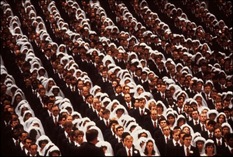

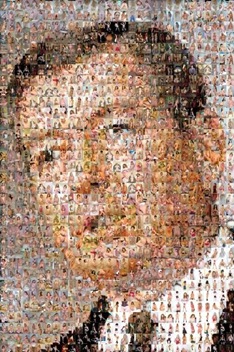
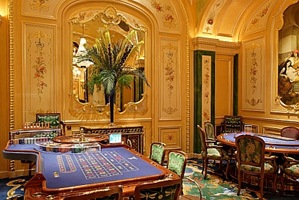

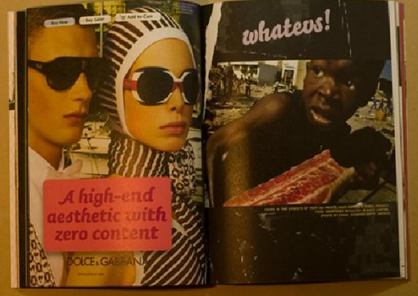
I confess… I skimmed. No stamina. So is hyper-reality an oxymoron? Since it is in fact hypo-real? Similar to virtual-reality not being virtually real, nowhere near it; and to virtual communities which are not together (com-) and not united?
What of Mcluhan > the medium is the message?
Also I wonder about gods. Especially the early Indo-European gods – Greek, Persian, Vedic. Are they examples of hyper-reality? Natural forces repackaged (and even parodied) for mass delusions about being in control…
Recently I’ve felt the need to reject notions of absolute truth, absolute reality, absolute knowledge. I believe it’s possible to have a healthy relationship with vedanā, but not much beyond that, though that in itself is revolutionary. Not sure that larger-than-life ‘gurus’ help ordinary people to lead healthy lives. Aren’t we, with hyper-reality, still looking beyond vedanā to tell a story about what is real…
Jayarava
Hi Jayarava
Nice to have your comments here. Some interesting points you’ve made.
Hyper-reality as oxymoron.That might be close to the point. I think of it as extremely ironic at the very least.
Hypo-reality. That too might describe it. It is very thin. Lacking in depth and connection. Anemic.
The medium as message. The mediums are as varied as fantastic architecture and faux landscape to music as life-narrative. Idealizations which are self-referencing. Buying a bubble which shines and shimmers in the sun but bursts when one tries to grab hold of it. (The moon in a dewdrop to reference Zen). The mediums converging as a reflection but not a reality. To see something but it’s not the something itself.
Gods. I thought about gods a lot when I was writing this. But the differences came to me in this way. Gods are an attempt to imbue meaning into chaos. Derrida and others have somewhat romanticized the symbolic interchange that gods provided in the past in an attempt to escape the materialist interchange. That’s what I meant about not being able to go backwards and reclaim some kind of mindset of the past. The symbolic explanations have proven to be lacking as are the materialist explanations of the present. The move into idealist explanations via creations labeled as reality also will prove lacking although it will continue for quite some time to come I think until another mass of dissatisfaction is reached and a new paradigm emerges. What that will be is anyone’s guess. If Buddhist principles were to become widely understood (unlikely) then there could be something akin to a Buddhist revolution. A focus towards understanding reality on its terms rather than any imposed by an artificial framework. But I think that we are so fascinated with the products of our own minds, as a species, that a technological phase will emerge even more strongly before it too proves unsatisfactory.
If one took a viewpoint similar to the historical analysis that I mentioned in the post it the development would be something like
Symbolic explanation –>Materialist explanation–>Idealist explanation–>(Technological explanation)–>Return to reality as it is
Of course this has all the problems of any evolutionary type theory but the continuing movement towards a cyber-society or techno-humanism will precede any acceptance or realization of reality. This technological phase is like a melding of the materialist-idealist positions. (This is sounding suspiciously similar to Nishijima Roshi‘s 3 philosophies, 1 reality-hmmm)
One of the main points is that these, gods, materialist explanations, idealist fabrications, technological innovation are all mind products. And great faith, reliance and increasingly dependence is placed, at different times, in each of these. None is an ultimate, absolute truth, or any sort of truth at all in a very broad perspective yet they are treated as such. It is how humanity has functioned.
Vedanā is something we can become comfortable with, or accommodate provided we recognize origins, effects and utility in the broad perspective. Deliberately evoking vedanā in order to avoid recognition (which is what hyper-reality does to a great degree) is not so comfortable and always dissatisfying.
Somebody wrote in Wikipedia:
I would agree with that. A healthy relationship is both possible and necessary since I don’t think it would go away with any kind of awakening. The crux of the Buddhist endeavor seems to revolve around this.
Not much confidence in gurus here regarding all of this. Especially the “larger than life” variety. Surrounding something or someone with a lot of ornamentation just clouds up anything of value that they might offer. And too often they themselves get sucked into the vortex of these clouds.
Absolutes-I still choose to maintain the naive notion that there may be some absolutes, though what they might entail are not at all clear.
Every approach thus far seems to be telling a story about what is real but the stories themselves become diversions from their initial purpose. It seems too scary to reject these ideologies, for what else is left when there are no more convenient explanations?
That’s the biggest question.
I don’t watch much TV these days; I think the last show I watched from start to finish was the finals of the Eurovision song contest about a year ago; I haven’t seen Avatar either, nor any other blockbuster since the Lord of the Rings trilogy, I think. So I’m less hip than most to what goes on in TV and film.
However, I recently bought a boxed set of The Muppet Show, season 1. I’ve been enjoying watching that with my wife.
That show could never be made these days, because it doesn’t attempt to hide the artifice. The strings and sticks moving the muppets are in full view. The guests are made-up, for sure, but they still look human, not surgically perfect, with blemishes, and sometimes even a sheen of sweat from the studio lights. The sets are unabashedly handmade, as are the muppets themselves.
Perhaps hyperreality has caught up with us.
I have given up going to most films, especially when scheduled in the evening. Some years ago, I joined up with friends and we went as a group to see one of the Johnny Depp Pirates of the Caribbean movies.
That night, I fell asleep, but it was a restless kind of sleep. All night long, my sleeping mind was agitated and pulsed with after images from the film and even some of the trailers that had preceded it. I felt as though my interior had been graffiti’d and penetrated with imaginal material that was not indigeonous to my own interior–as though the intensity of the film and its trailers had imposed someone elses material into my own inner garden.
I did not like the experience and it felt intrusive. I much preferred having been with my friends and could have skipped the movie itself.
I The other day, I went to a free day at the Academy of Science. It was fun in its way, but what I saw was an interior filled with replicas of a jungle, with birds, plants and butterflies, replicas of tropical ocean environments, and they were lovely yet as artificial as the country house and farm created for Marie Antoinette at Petit Trianon.
By contrast, a good friend of mine was with his sister and nephews at a gas station in Bakersfield. He went to take a much needed smoke and saw a handsome old house across the road. The area was countryside, very hot that day, and there was one patch of shade on the lawn of the house–a pepper tree.
My friend thought he saw a dog, a very large dog, under the pepper tree. It was not a dog–it was a full grown mountain lion, taking its ease, using the one bit of shade available.
MMy pal was stunned and also well aware that that lion was a force to be reckoned with. He begged his sister to have a look and she shrilled back, ‘Oh be quiet, you made me lose count!’ She went back to counting her paper money, unable to lift her eyes from her wallet to behold an unrehearsed experience of one of the most powerful and marvellous creatures in the world.
I skimmed too, and I skimmed the comments!
My sister worked for a long time in “reality” TV – crazy. The things those people do, on and off camera, is unbelievable – well, we did at least hear about the guy who faked his kid’s disappearance/(death?) to get on reality TV. Then you hear how much money those folks get… It’s nuts. Even my sister, as a mid-level producer makes insane amounts of money; but she wants out.
But as you say with the videos, the layers of superficiality, imagery, crap, crap, and more crap, are very tough to dig out of.
And that’s our society. Yesterday, out of the blue, after she’s gone over 6 months without a TV (much to my happiness), my girlfriend said she wants one, a big one, to watch the Olympics on. Ay caramba! And of course, I do it too – mostly with books though, so I don’t feel sooooo bad, hehe.
But what can we do – fight it day after day? Raise mindfulness/awareness? Delete our virtual identities? http://www.npr.org/templates/story/story.php?storyId=122379695
:) I’m tempted.